8 Clever Products That Rectify 4 Common Laundry Mistakes, According to the Experts
Dotdash Meredith and Yahoo Inc. may earn commission or revenue on some items through the links below.
Here’s what to buy, what to do, and what not to do.
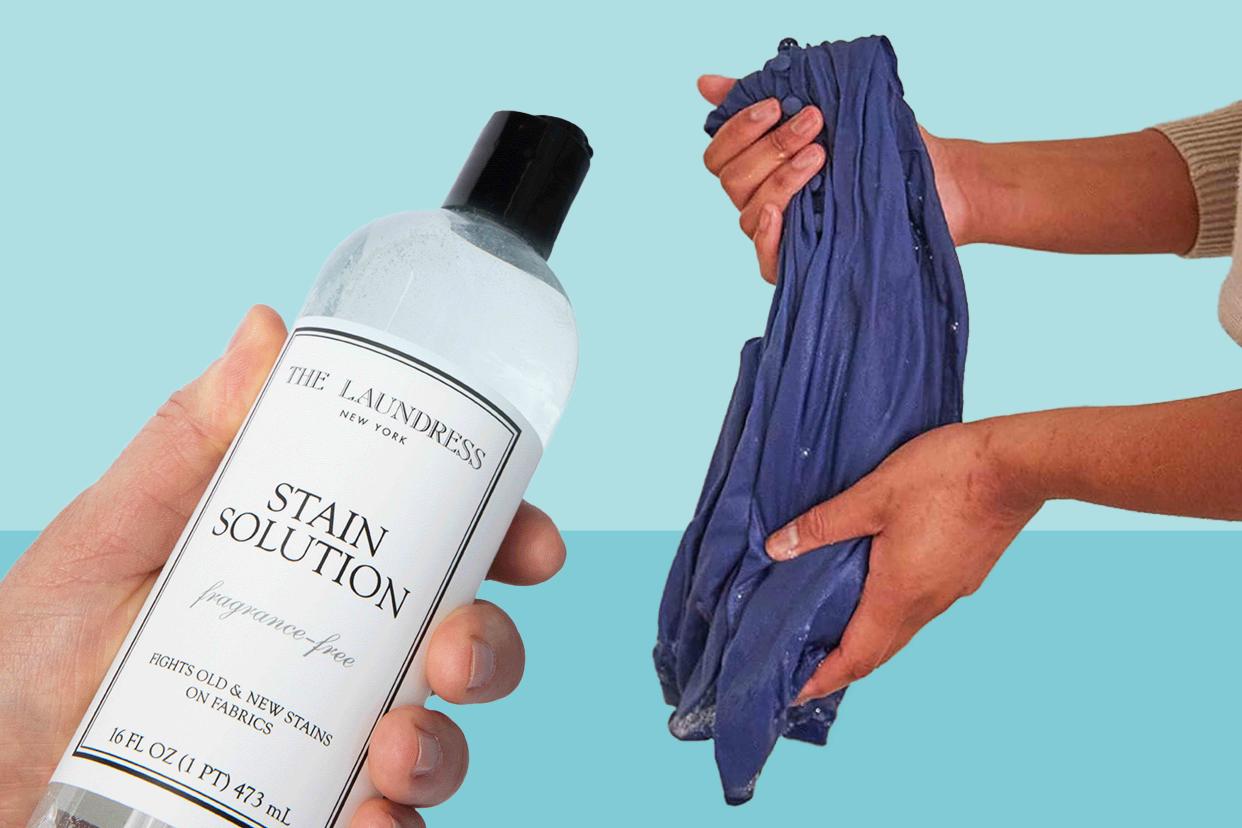
Real Simple / Reese Herrington
Here’s something you probably haven’t considered: You could be doing your laundry wrong. No matter how long you’ve been doing the wash, a refresher is always a good idea, especially when there’s expert advice involved. After all, everyone does laundry a little differently, and you were probably a teenager the last time someone walked you through how to do it. Until now.
Real Simple reached out to the best laundry experts out there, so we could find out what works and what doesn’t in the laundry room. Should you use fabric softener on some materials, but not others? Are all stain removers created equal? And, most importantly, what’s the right way to do the laundry and what are the products needed to do it?
Keep reading for important laundry tips and tricks from the pros—including what to buy, what not to do, and how to fix those bad laundry habits.
Shop Experts’ Laundry Picks
Much Fun Three-Piece Honeycomb Mesh Laundry Bags, $8 (was $12)
Mistake #1: You’re Using Only One Detergent
If you are throwing all your clothes and linens together, and using one universal detergent for all of it, you’re doing it wrong, pros say. Not only do different fabrics require different temperatures, but they also may require different detergents, too. The same goes for colors versus whites.
“Always launder like colors together,” Hannah Yokoji, Brand Director at The Laundress, tells Real Simple. “A core tenet of The Laundress’s fabric care philosophy is using a targeted solution to provide specialized care for each of your garments. Certain fabrics—especially delicates and knits—require a gentler touch, which is why we created our everyday and specialty care detergent collections.”
Especially for items that need specialty care, Yokoji recommends consulting The Laundress’ Care Tag Guide, and breaks down the preferred detergent for each fabric.
In addition to choosing the right detergent, Elizabeth Shields, Operations Manager of Super Cleaning Service Louisville, a professional cleaning company in Louisville, KY, explains the importance of washing delicates on a cold temperature setting.
“Delicate fabrics, like soft silk or lace, prefer cooler temps,” Shields explains. “Sturdier stuff, like denim or cotton, can handle warmer water for effective cleaning. When it comes to tough stains, hot water can be a superhero, but stick to items that can handle it, like towels and linens.”
Related: The 9 Best Laundry Detergents of 2023, Tested and Reviewed
The Solution: Shop Specialty Detergents
Knits and Woolens
It’s important to launder these cozy knit fibers in cool water using a Delicate or Hand Wash setting for best results. The Laundress’s Wool and Cashmere Shampoo is enzyme-free and optimized for cold water cleaning. It’s cedar scented, which means clothes come out of the washing machine with a subtle, woodsy fragrance that’s not too overwhelming, and one 16-fluid ounce bottle makes 31 laundry loads when measured to a medium dose.
The Laundress Wool and Cashmere Shampoo
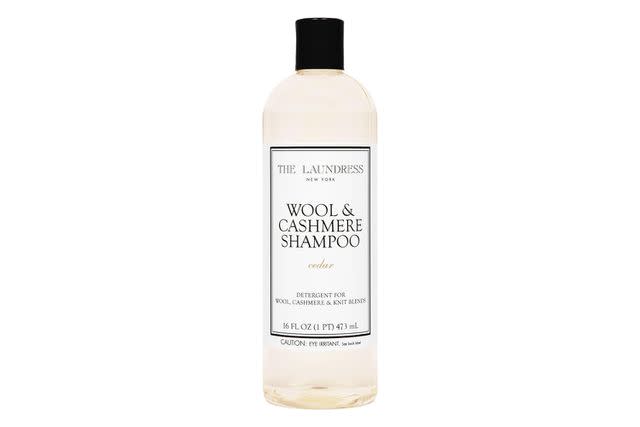
Amazon
$30
Delicates
Shields recommends a product from the Laundress called Delicate Wash. “It’s like a gentle spa treatment for delicate items,” Shields explains. “It loves cold water, which is great for those fragile clothes.”
Double-concentrated and made with bio-based ingredients, this gentle wash has a soft floral fragrance with light notes of citrus. It also lasts for up to 31 loads of laundry, and its lightweight consistency makes it ideal for lingerie, undergarments, sleepwear, and even evening wear.
The Laundress Delicate Wash
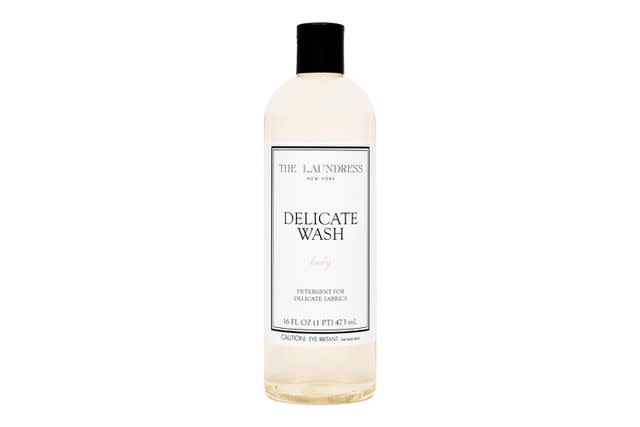
Amazon
$30
Cottons, Sheets, and Towels
Everyday use cottons and more durable garments like sheets, towels, denim, and synthetic athleticwear, typically do not require special care. According to Rick Rome, CEO and Founder of the WashClub NYC, gentle, natural-based soaps are strong enough to clean these common fabrics, and are less likely to damage your garments.
“Castile or Marseille soaps are great for cleaning cotton because they are vegetable-based, not harsh, and extremely versatile,” Rome explains. “They can be used on a variety of fabrics. Marseille soap, in particular, is really effective at removing tough odors from microfibers.”
Available in various sizes and scents, including olive wood, lavender, and white tea, Compagnie de Provence Savon Marseille Olive Soap Cube is made in France, free of parabens, coloring agents, animal fats, mineral oils, aluminum, and triclosan. It’s made from olive oil and is naturally fragrance-free and softening on clothes.
Compagnie de Provence Savon Marseille Olive Soap Cube
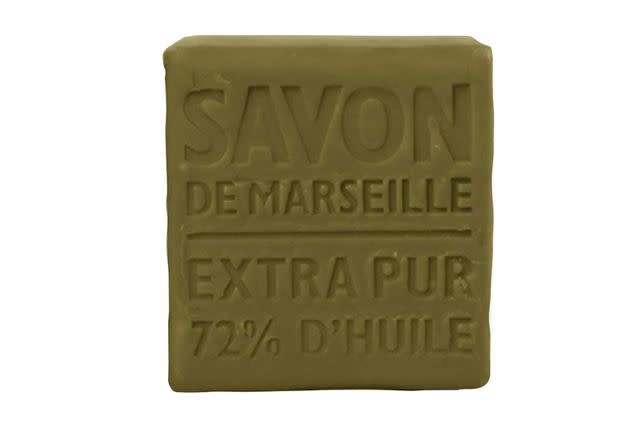
Amazon
$12
Mistake #2: You’re Using Fabric Softener Beads
While fabric softener may seem like a good idea to make laundry smell better, prevent wrinkles, or remove static, it’s only effective when used correctly. That being said, most laundry pros will tell you to forgo fabric softener beads altogether.
Related: 8 Ways to Make Your Laundry Smell Better
“Fabric softener beads are softness enhancers for clothes, but there’s a catch,” Shields says, confirming that these beads create unwanted buildup in the machine that can cause more damage in the long run. “While the bead buildup might not be a problem right away, it can cause issues with your washing machine later on. So, if you want an easy laundry experience, liquid softener is the safest choice.”
The Solution: Switch to Liquid Fabric Softener
Beads are conveniently mess-free, since they’re solid, which is one of the reasons they have become so popular. But, according to the laundry experts, they’re not worth the troubles they can cause later on.
“For us, nothing beats Downy Ultra Liquid Fabric Softener,” Shields adds. “It makes clothes soft and smells great for days, [and is] compatible with various washing machines with less risk of residue buildup.”
Formulated to resist stretching, fading, and fuzz, this fabric softener conditions clothes while reducing static and wrinkles, too. It has a crisp, cool-cotton fragrance, and is compatible with HE washing machines as well as non-HE. You can use it along with your detergent, adding one capful to the dispenser.
Downy Ultra Liquid Fabric Softener
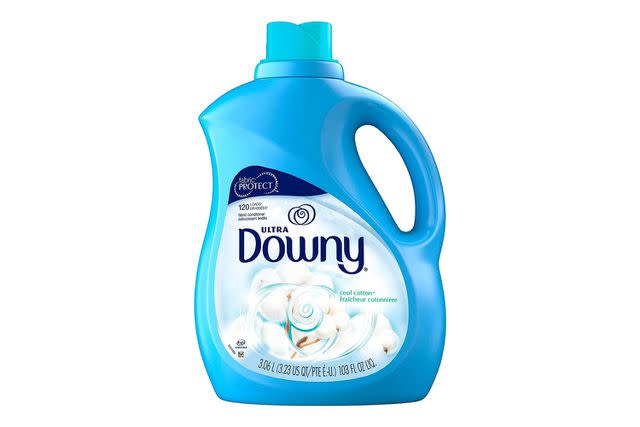
Amazon
$10
Mistake #3: You’re Using the Wrong Stain Remover
Another way you’re doing the laundry wrong is if you’re misusing stain remover, or not pretreating stains at all. Pretreatment is crucial to removing stains. The effectiveness of a stain remover has to do with several factors, the first being the quality of said remover. A good stain remover should contain a bleaching agent, like hydrogen peroxide, and should also be safe for the fabric you’re working with.
The Solution: Grab a Stain Pretreatment
It’s not just about which stain remover you use, but how you use it, too. Stain removers should be applied as a pretreatment, as in, before the garment is washed. Always read the instructions on the product label before pretreating clothes with a stain remover. Many removers will recommend using a stain brush, or to rub remover onto the stain in a circular motion. While consulting the instructions on the stain remover, and the care label on the clothing, pay attention to the recommended wash and dry temperature on the labels, too.
Related: Our 9 Best Laundry Tips of All Time
“Using the wrong temperature to clean stains is another common mistake,” Rome explains. “Some stains, like oil-based stains, respond best to warm or hot water, whereas protein-based stains should be treated using cold water.”
Yokoji recommends The Laundress Stain Solution, a stain pretreatment made with bio-based ingredients for all washable fabrics. It has a triple enzyme blend for more effectively targeting protein-, tannin-, and oil-based stains like grass, makeup, and sweat stains. It works in all water temperatures, and should be directly applied to the stain, then lightly scrubbed with a stain removal brush.
The Laundress Stain Solution
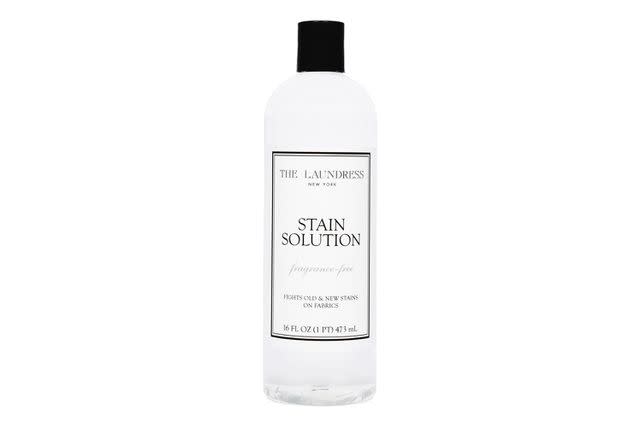
The Laundress
$20
Mistake #4: You’re Over Filling the Dryer
So much can go wrong in the dryer, and many times, it does. The dryer can shrink clothes, cease its drying effectiveness, and even catch on fire. To avoid any dryer-related mishaps, clean the lint trap after every use, protect delicates, and enlist the help of dryer balls.
“Another mistake people often encounter when doing their laundry is overloading the dryer,” Rome explains. “Trying to dry too much laundry in one cycle keeps the clothes from drying evenly. This can increase drying times, energy consumption, and wrinkles.” Rome recommends only filling the dryer three-quarters full, but never more than that. “Half [full] is even better,” he adds.
Related: 5 Best Laundry Hacks, According to TikTok
The Solution: Use Dryer Balls, Mesh Bags, and More
“A great bag for washing [and drying] delicate clothing should be made of mesh, and have a zipper closure that can hold roughly 5 to 8 pounds of garments,” Rome says. “It is also important that the bag’s zipper is galvanized so it doesn't rust.”
Mesh drying bags protect your most delicate garments, and help evenly distribute the heat. This three-pack is made of high-quality mesh with extra strong, polyester fiber netting. It also features a rust-free zipper with an automatic locking mechanism and overlapping flap that protects the zipper from opening up, or getting jammed in the washer. Each bag measures 12 inches by 16 inches, and can hold 20 pounds of clothes for a convenient, snag-free washing experience.
Much Fun Three-Piece Honeycomb Mesh Laundry Bags
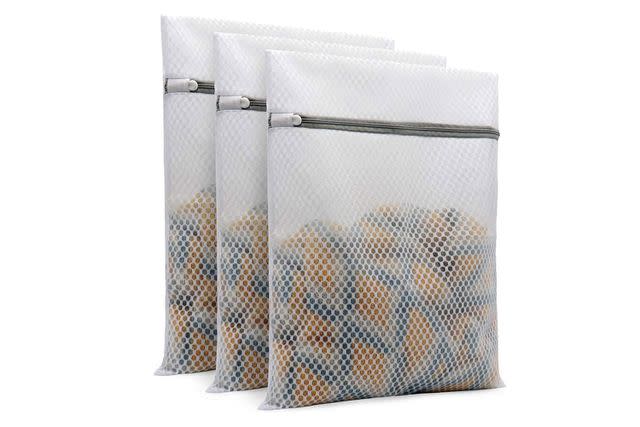
Amazon
$12
$8
According to Yokoji, mesh bags also “prevent pulling and tangling during the cycle.” Yokoji recommends always using mesh bags for fabrics like synthetic athleticwear, knits and woolens, and strappy bras or tops.
“Over the years of our laundering expertise, we’ve observed that fabric damage generally occurs most often in the dryer (hello, shrinkage),” Yokoji says. “To avoid this, we recommend cutting down on the heat whenever possible! Always opt for air-drying when laundering any sensitive fabrics, including knits, woolens, and delicates.”
Related: The 9 Best Dryer Balls for All Types of Laundry
Swap out high heat (which brings as back to mistake #1) for dryer balls. Dryer balls are made from wool, and as most laundry pros will tell you, they’re the secret to gently drying laundry faster, sans the extra heat.
“I love dryer balls,” explains Patric Richardson, known professionally as The Laundry Evangelist, hosts the HGTV show, The Laundry Guy. “They speed up drying time, and you can scent them with your favorite essential oils. If you want fragrance [in your laundry], here is where to add it.”
We named the Smart Sheep Wool Dryer Balls ‘Best Overall’ in dryer balls—and for good reason. This six-pack of extra-large dryer balls made from 100 percent premium New Zealand wool is hand-felted by artisans in Nepal without any extra fillers. It is recommended to use three laundry balls for smaller loads, and up to six for larger loads. They are petroleum-free, and can be used for more than 1,000 loads of laundry.
Smart Sheep Wool Dryer Balls
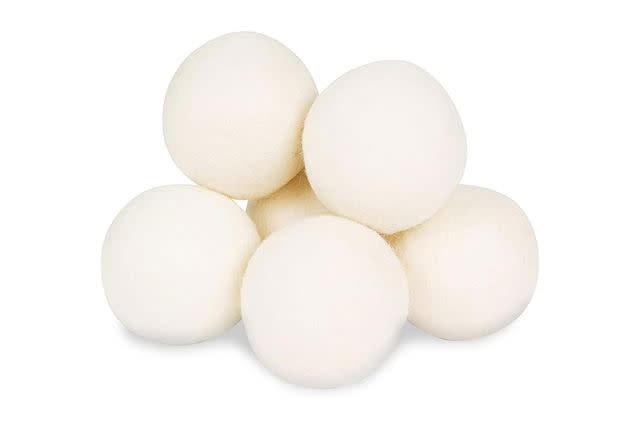
Amazon
$20
Another way to reduce heat while drying (again, it all comes back to laundry mistake #1), is to skip the dryer altogether.
“Drying with too much heat can also cause unnecessary damage to your clothes,” Rome adds. “Like washing, drying certain fabrics on high heat can cause the fibers to break down. When drying sweaters and delicate fabrics, it is best to use medium to low heat to dry, [but] the safest option for any item of clothing is line-drying.”
Made from anti-rust galvanized aluminum, the floor-mounted drying rack measures 73 inches by 73 inches by 72 inches, and has 12 vinyl lines for hanging and air drying laundry outside. Thanks to its rotating top, it has 165 feet of total drying space, and it closes entirely for convenient storage when it’s not in use.
Household Essentials Rotary Umbrella Drying Rack
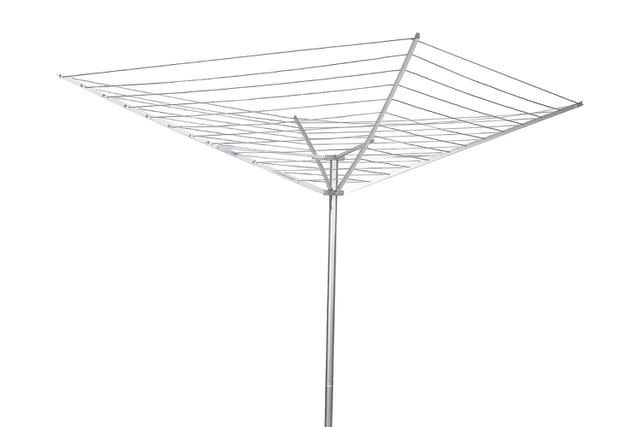
Amazon
$75
For more trusted laundry products, shop our favorite products vetted by our lab testing below.
Gain Original Liquid Laundry Detergent
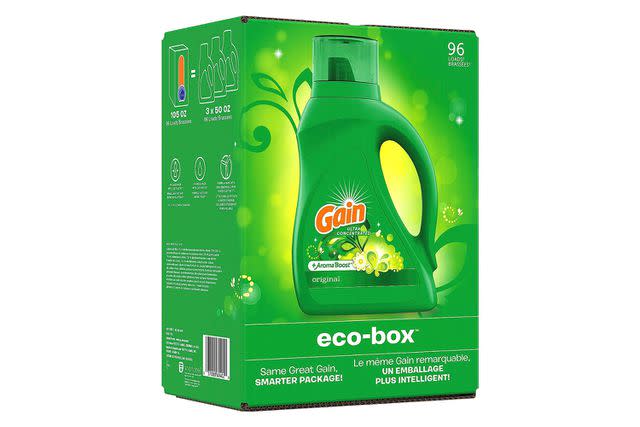
Amazon
$15
Molly’s Suds Laundry Detergent Powder
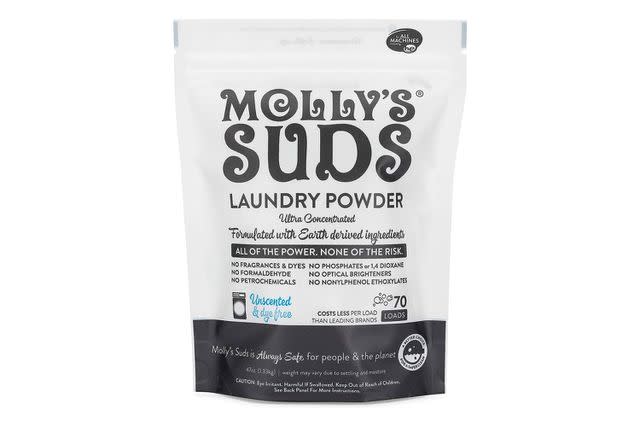
Amazon
$15
Grandma’s Secret Spot Remover Laundry Spray
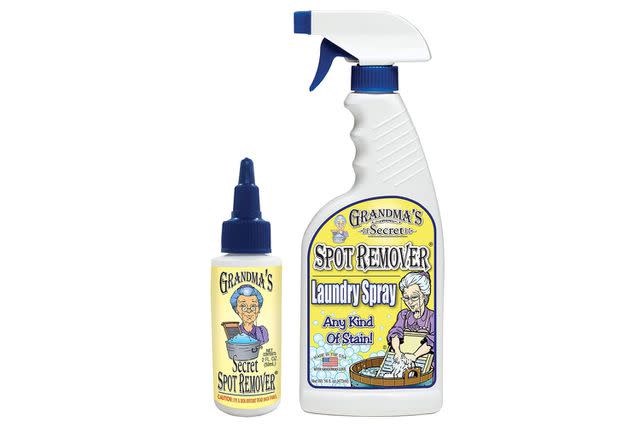
Amazon
$19
$15
Carbona Laundry Stain Scrubber
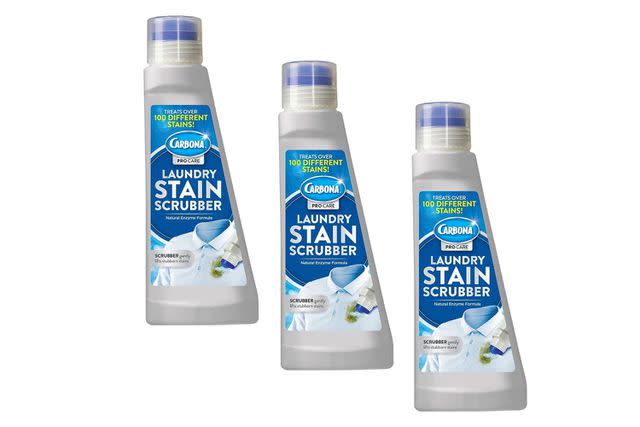
Amazon
$18
Bryt Laundry Detergent Sheets
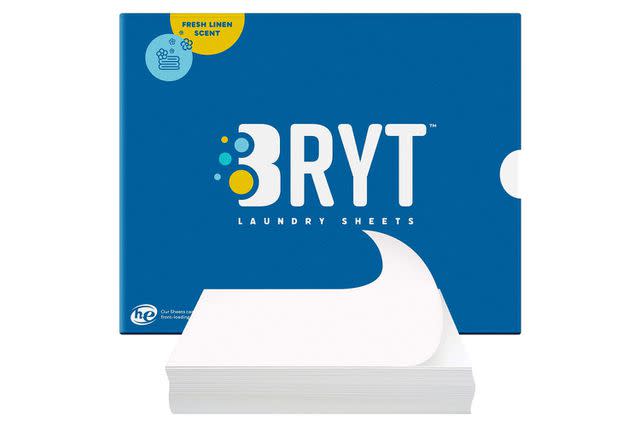
Amazon
$22
$16
For more Real Simple news, make sure to sign up for our newsletter!
Read the original article on Real Simple.
